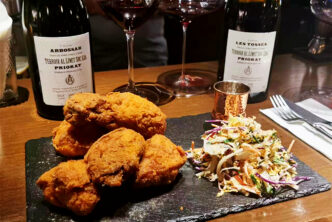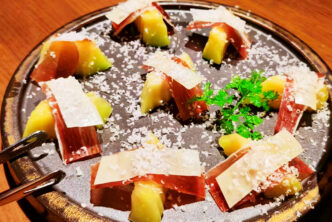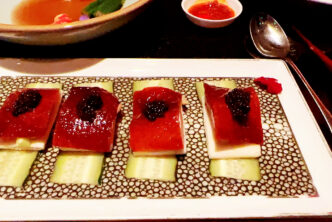Walter Ferretto – Il Cascinale Nuovo
Strada Statale 231 # 15
14057 Isola D’Asti
Italy
Tel.+39 0141958166
The dishes
Tempura-freid oysters, green apple, lemon (Ostriche in Tempura-Mela Verde-Limone)
Creamed salt cod crisp (Croccante di Baccalà Mantecato)
Egg, smoked salmon, chives (Uovo nel guscio-Salmone affumicato-Erba cipollina)
Brown trout, fennel, citrus fruits, chikoree (Trota Fario-Finocchio-Agrumi-Puntarelle)
Stuffed artichoke, shrimp, bisque (Carciofo Ripieno-Gamberi e Bisque)
Mascarpone raviolo, Parmigiano, black truffle, broccolini, smoked crumble (Raviolo di Mascarpone- Parmigiano-Tartufo nero-Broccolini-Crumble Affumicato)
Gurnard, marsala supreme sauce, almonds, pomegranate (Gallinella-Salsa Suprema al Marsala-Mandorle-Melograno)
Pre-dessert, sweet surprise, petits fours (Pre Dessert-Dolce Sorpresa- Piccola Pasticceria)
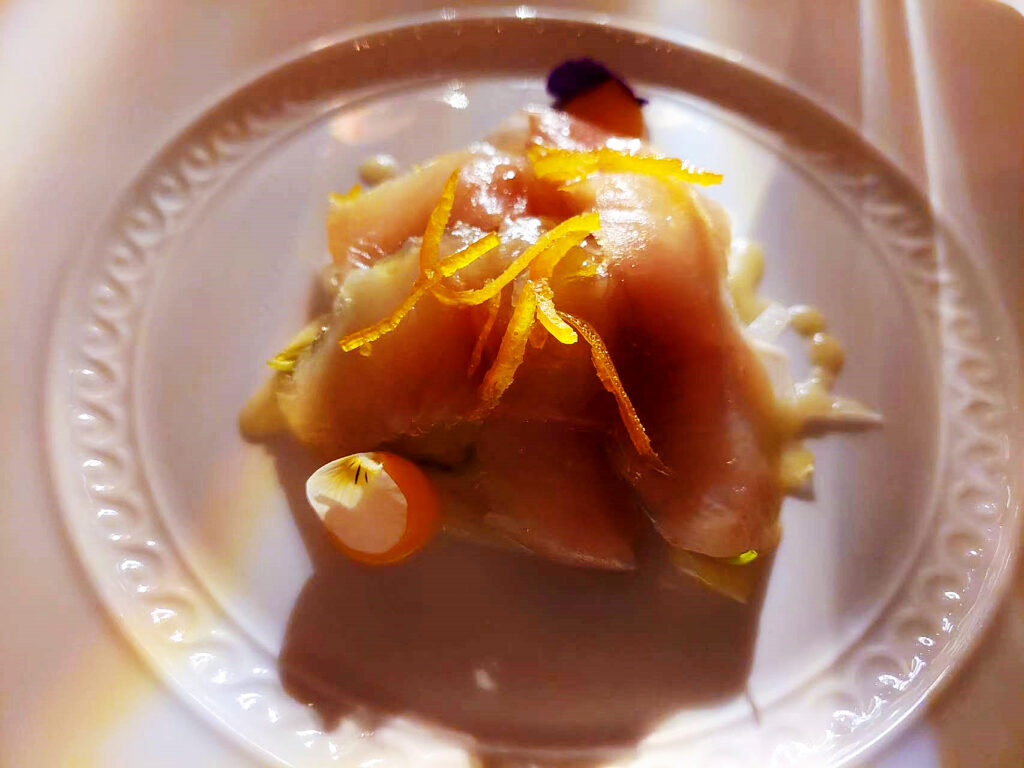
There are some wildly talented individuals cooking in and around the Langhe; and while not every much-hyped chef and restaurant lives up to what is being sung to the high heavens about them, when you do hit on the real thing you’re in for a treat. And that’s the case with Il Cascinale Nuovo, one of Piedmont’s best restaurants that isn’t much on the radar of the many foodies who always flock to the usual names in Barolo and Barbaresco: Too bad, for they are missing out on a chef and a cuisine that are wildly better than most in and around the Langhe (or anywhere else in Italy, for that matter).

Let’s start off with the basics: chef Water Ferretto has been at Il Cascinale Nuovo since 1985, and the restaurant boasts one Michelin star since 1989 (which for all those of us not strong in math, means thirty years and counting: I repeat, 30, trente, trenta, sān shí). Allow me: all that in and of itself means something. Another very important fact is the level of people Ferretto trained under: the Haeberlins at Auberge de l’Ill (one of the twelve or so greatest restaurants in the world), Christian Constant of the Les Ambassadeurs of the Hotel Crillon in Paris, and Franco Colombani, one of the less famous and yet by far the best chefs Italy has ever spawned. It’s that sort of background and life experiences that have allowed Ferretto over the years to create one memorable dish after another, all of which have a solid foundation in his research and studies, rather than being flights of fancy that sound cool but all too often taste anything but. So, for example, his most famous dish “millefoglie di lingua con foie gras”, that he first launched in 1987 and has basically never been able to remove off the menu, was not born out of the desire to use an expensive ingredient such as foie gras. Rather, it was born from the hours he spent in Alsace, where they know a thing or two about that specific product and where he was able to become an expert of it. To then unite that ingredient in successful fashion with veal, the latter a Piedmontese food staple (an integral part of the bollito misto but also of vitello tonnato, for example) is the result of knowing your own region’s cuisine and drawing upon life experiences so as to elevate the finale creation to all other level of gastronomic bliss. I mean, let’s face it, there’s a reason why some dishes work, and why some chefs have enduring success. In other words, this place is no flash in the pan: it’s a true, solid, no bs, high-quality dining enterprise that does not need bright lights, gizmos (Paco-jets) or catch-phrases (“zen garden”, “zero kilometer” and all the rest of it) to grab headlines. And yet it grabs those nonetheless, if on a more personal level, at least in the opinions of each of its the very knowledgeable customers that fill the place up day and night. And when you hear Walter answer (when asked about his cooking and what he thinks the most difficult thing about being a chef is) “…the most difficult thing is to find the right balance in each dish” you realize why Il Cascinale Nuovo is as packed with knowing, well-travelled sybarites as it is. No fools they.

The restaurant has long been the love affair of complementary duos: At first it was Pasquale and Giuseppina Ferretto, followed by Armando and Silvana and nowadays the current duo, siblings Walter (in the kitchen) and Roberto (in charge of the large dining spaces and the exceptional, large and fairly-priced wine list). The two have taken the restaurant across new frontiers, and the place today is hardly anything like it was when it first opened back in 1968. This is why in 19985 the restaurant changed its name to the current one, becoming “Il Cascinale Nuovo” (or “new”) as opposed to its previous incarnation, known as just “Il Cascinale”. Since 1983, the Il Cascinale Nuovo experience is not limited just to the realm of the restaurant: also a hotel, there are also fifteen rooms where guests can stay in total relaxation (the outdoor pool area is especially inviting).
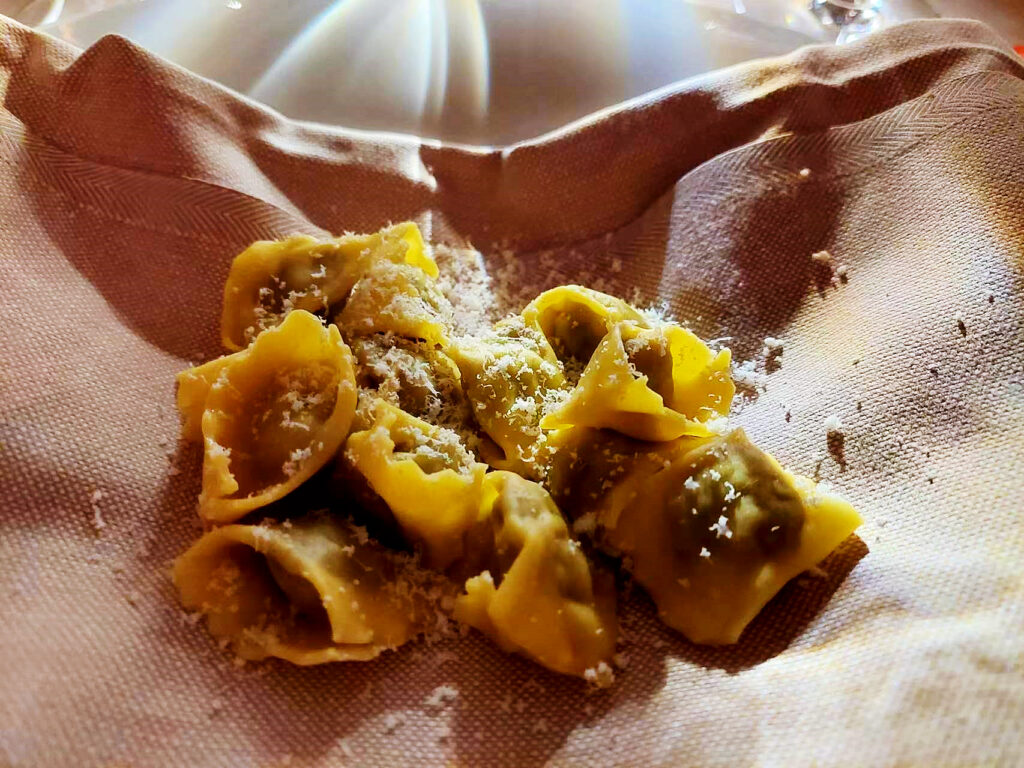
The menu I am writing about was designed for Saint Valentine’s Day, but in fact many of the recipes (or variations thereof) are available at other times of the year too. It was a taste bud-thrill from start to finish, and picking a favourite dish or even those I liked better than others proves inordinately hard.
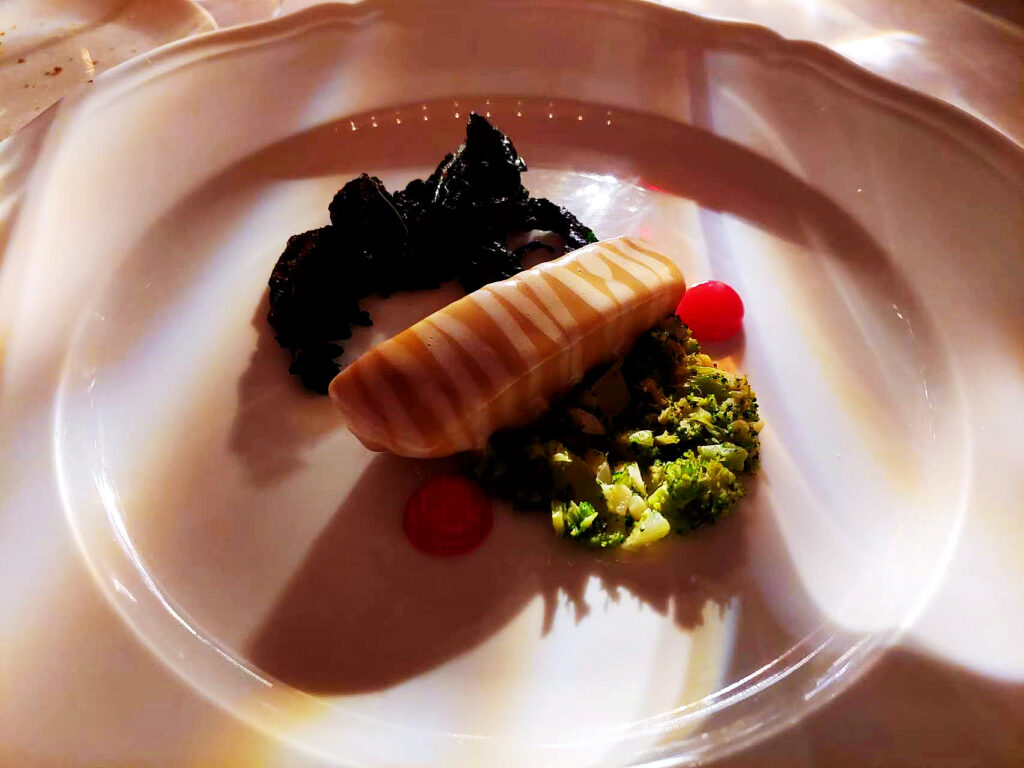

Wine has always had an important role at Il Cascinale Nuovo, and it could not be otherwise given the Ferretto’s family friendships with the likes of Angelo Gaja and Giacomo Bologna (it was in fact a winemaker who organized Walter’s first stage at a three Michelin star restaurant, at the start of his cooking career). And so, you almost expect there to be many wonderful wines and vintages to choose from, and so it is. Roberto’s suggestions are always spot on and he’ll help you make some interesting discoveries or you can just pick away from the list to your heart’s content: you cannot go wrong either way. Once again, I drank very well during my latest evening at the restaurant. Uberti is one of Franciacorta’s best estates and their Uberti NV Franciaciorta Rosé Francesco I is just wonderful. Perhaps not as complex as some of their other offerings, but make no mistake about it the panoply of small red fruits and floral accents, not to mention the balanced acidity and dosage, make this one of Italy’s best pink bubblies. And what is there to say about Doro Princic, except that he’s one of Italy’s most talented wine producers and every wine from his winery is a benchmark for the grape variety? The Pinot Bianco and Malvasia bottlings may be the best in his portfolio, but the Ribolla Gialla is delicious too: in particular, the Doro Princic 2018 Ribollla Gialla Collio is just exceptionally lovely and lively, boasting hordes of citrus fruit, saffron and white flower nuances. Speaking of Pinot Bianco, by almost every expert’s account the best in Italy is the one made by Terlano. Recently the wine has struck me as being increasingly marked by ripe aromas and flavours of citrus and tropical fruit, hopefully not a sign of climate change; this would be a pity because the Pinot Bianco trademark elegance is slightly lost in the process. It’s still a great wine but I prefer it on the fresher and more piercing side: that said, the Terlano 2019 Pinot Bianco Riserva Vorberg is just as fresh and lovely as I love this wine to be. Last but not least, readers who follow me know that I believe the Prapò bottling to be always one of the three best Barolos Ceretto makes in any vintage. And so it is that the Ceretto 1989 Barolo Bricco Rocche Prapò does not disappoint. It might not be quite as stellar as one would expect given the famous vintage (for example, I would have liked a little more depth and complexity to it for an even higher score, but I’m splitting hairs). Never mind: it is a remarkably good wine that is drinking perfectly now.
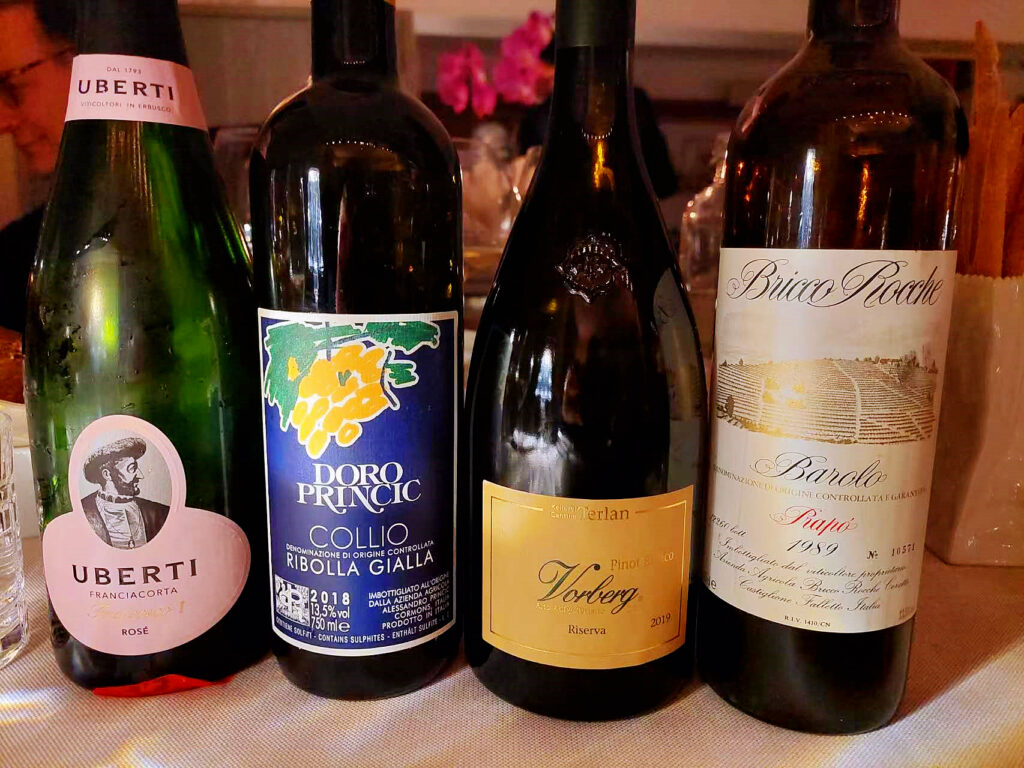
In ultimate analysis, when you cross the entrance at Il Cascinale Nuovo, you enter a universe of suave textures, balanced creations, outstanding ingredients, precise cooking, great wines, outstanding service, and a beautiful, refined environment. In more erudite words, it’s just one swell way to spend a lunch or dinner.
The wines
Uberti NV Franciacorta Rosé Francesco I 93
Doro Princic 2018 Ribolla Gialla Collio 92
Terlano 2019 Pinot Bianco Riserva Vorberg Alto Adige 94
Ceretto 1989 Barolo Bricco Rocche Prapò 93

 English
English
